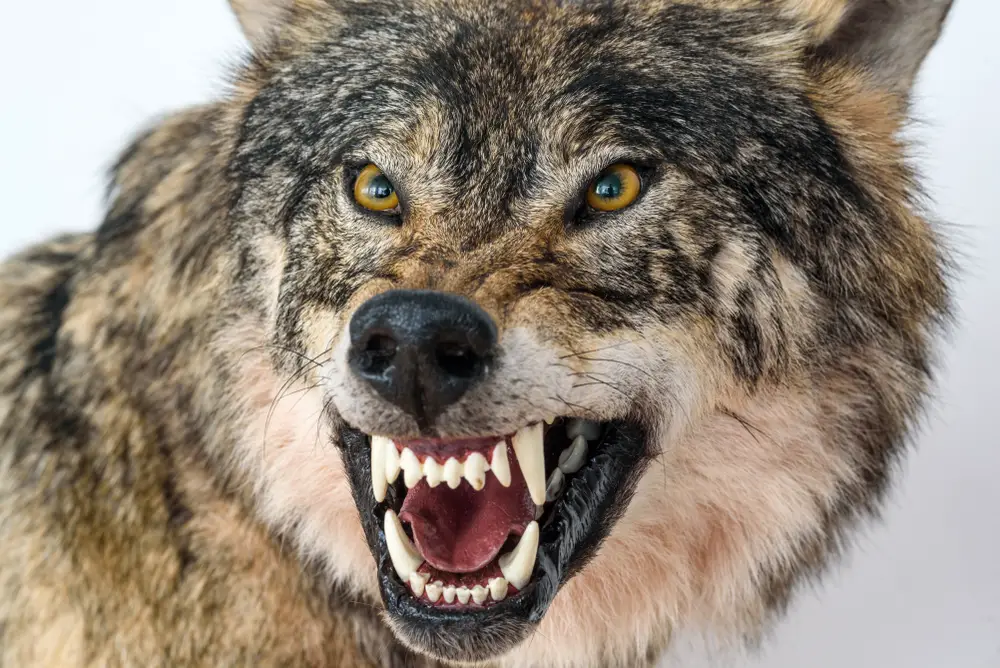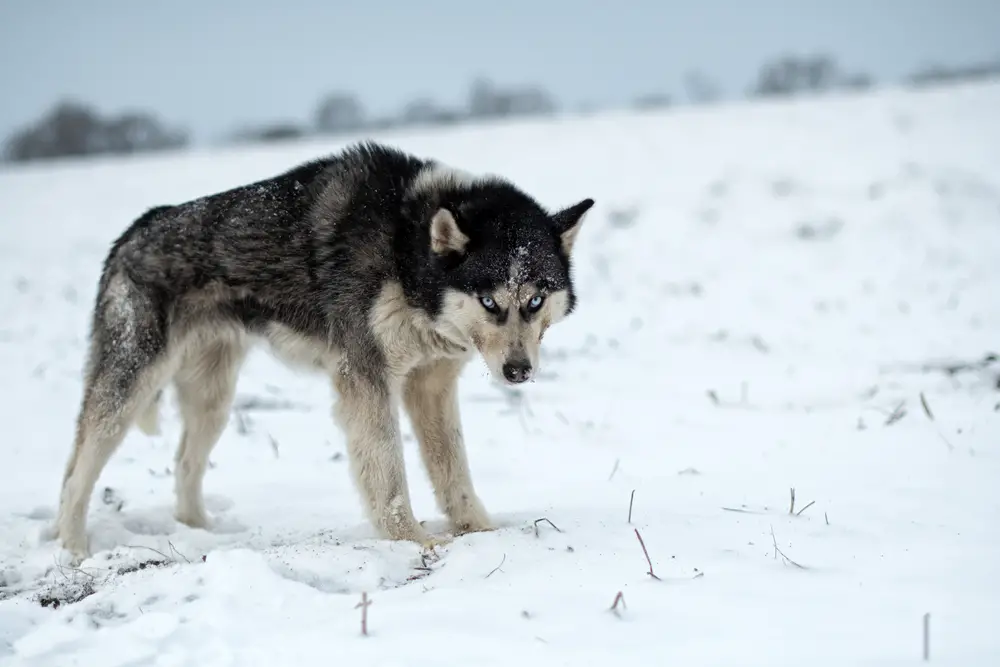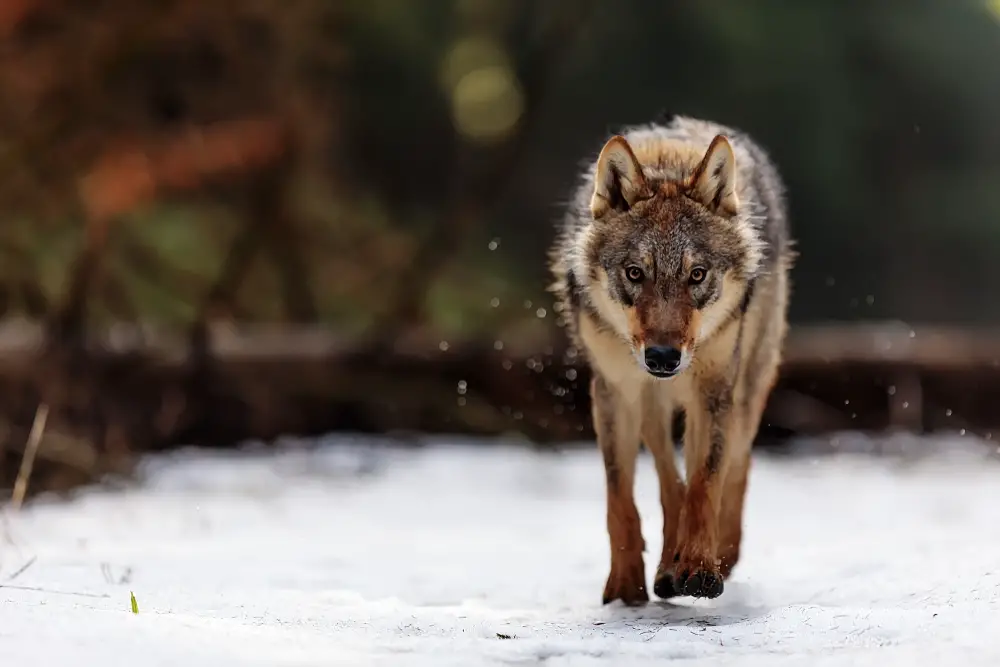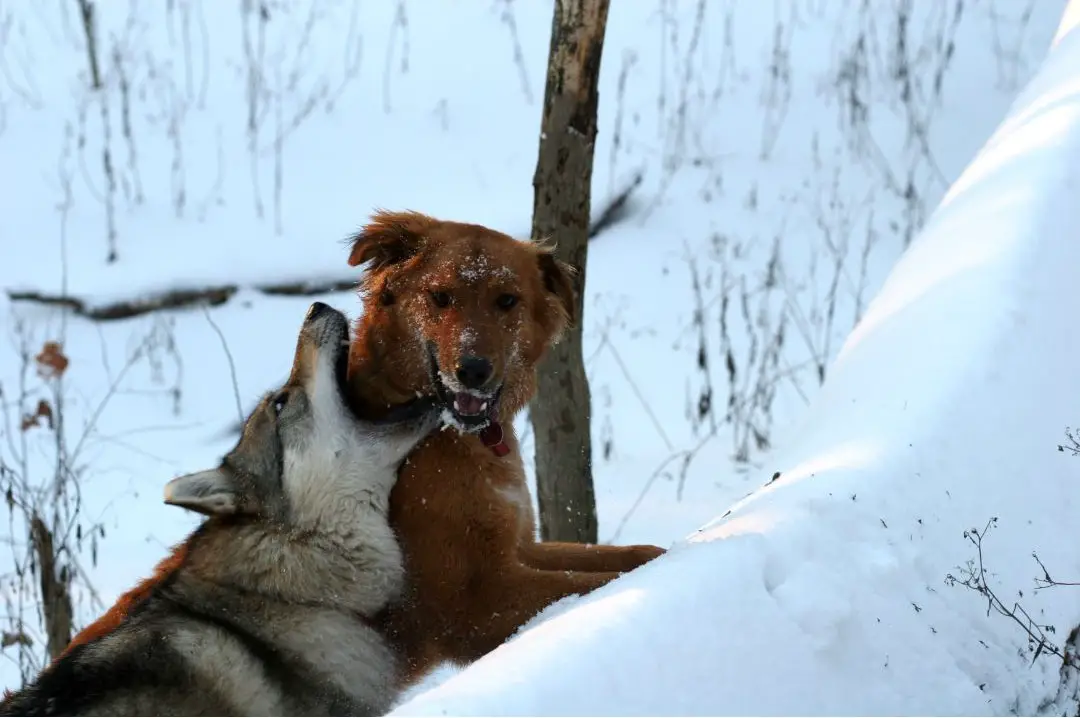Wolves are incredible creatures. They are intelligent, complex and caring animals that are entirely devoted to the pack mentality and their family. They are highly sociable creatures that live, hunt, play and thrive in their pack.
A wolf is an Apex predator, which means that they are at the top of the food chain, and are extremely efficient hunters and predators, which can lead you to wonder how vicious and fierce they really are.
This guide will explain all of this, and whether wolves ever attack humans.
Did you know that there are an estimated 18,000 wolves in the United States alone, with about two thirds of these residing in Alaska.
As a result, you may be wondering how much of a threat wolves are to humans, and what to do if you ever come across one yourself.

Are wolves dangerous to humans?
In some ways, yes, wolves are dangerous to humans, as they are wild creatures that can attack and kill you if they wanted to. That being said, wolves are naturally fearful of humans and will try to stay as far away from you as possible.
If one happens to wander into your midst by accident, then it could feel threatened, and may try to attack, but most will try to run away and will leave you alone.
Wolves are wild animals, so it is important to note that if you ever come across one, you should steer well clear of it, as they may become scared, defensive or attack you.
Because wolves are predators, there have been a small number of wolf attacks on humans.
However, this does not strictly mean that they pose a threat to humans. In actuality, domestic dogs kill more people every year than wolves do.
Do wolves attack humans?
There are many myths about how wolves are a deadly threat to humans. TV shows and films often show characters coming across wolves in the wild that almost always want to attack humans, but is this a reality?
Well, for the most part, wolves do not prey upon humans, nor do they seek them out to attack them. Wolves prefer to reside away from urban, built up areas, and can mainly be found in the wilds and wilderness of places such as Alaska, where they can roam forests and mountains freely.
They do not normally go near humans or suburban places, and are naturally very wary of humans.
In general, wolf attacks are some of the rarest of all large predator attacks, and do not happen often. In North America, there have been six recorded unprovoked attacks causing an injury, and 21 attacks from wolves that had been fed by humans or kept in captivity.
In actuality, the risk of being attacked by a wolf is very low, as they avoid human contact, roads, buildings and other locations where they may come close to people.
There are very few recorded wolf attacks on record at all. In very rare cases over the past two centuries, the only wolf attacks have been a result of sick or rabid wolves.

Do wolves kill for sport?
This is another myth that is not true, wolves do not kill for sport. Wolves are predators, and are in fact carnivores, but they only kill to hunt in order to sustain themselves.
Wolves do hunt in packs, meticulously planning and stalking their prey, waiting for the precise moment to strike, but this is only to feed themselves.
The only animals that actually kill for sport are humans! Whilst some wolf packs may leave some carcasses behind, this is largely due to them being too full to consume all of their prey.
Instead, it will be left for scavengers or other predators to dine upon.
What to do if a wolf tries to attack you
If you live in an urban area, then the likelihood of you coming across a wolf is very rare indeed. However, if you live in rural areas of Alaska and Canada, then you may need to make yourself aware of what to do if you stumble upon a wolf.
Wild wolves, like many other animals, are fearful of humans. However, this fear can quickly make them defensive, and they could attack as a survival tactic. The important thing is to remember how to deal with a situation like this.
When encountering a wolf, remember to remain calm, and do not run away- they will see you as prey and chase you. We can promise you, they’re probably going to be faster than you are. Instead, stand your ground, stand tall and make yourself look larger, they may become scared and will back off.
To get away, instead of running, simply back away slowly, whilst maintaining eye contact- do not turn your back on them.

To be safe, you should always hike or camp in the wilderness in a group and never by yourself, and keep dogs on a leash in case they come into contact with animals such as bears or wolves.
If a wolf starts to snarl or growl, then you will no longer want to be submissive, instead shout loudly and with gusto to show that you are not a target or prey. This can make the wolf back off, and you will be able to make your escape.
Your best chance is finding a group of people, as wolves are less likely to attack more than one person, and will only try to pick off someone who has fallen behind or alone. If you cannot find people, then climb a tree and wait it out until help comes.
If a wolf does attack you, then curl into a foetal position, hide your face and neck as best as you can. They will go for the throat and neck, so protect these areas at all times.
You can fight off a wolf if you are able to stand up again, after they have backed off, and hit it with a branch or weapon to strike at the face. Again, make yourself large and aggressive. If the wolf sees you as a threat instead of prey, then it will retreat.

